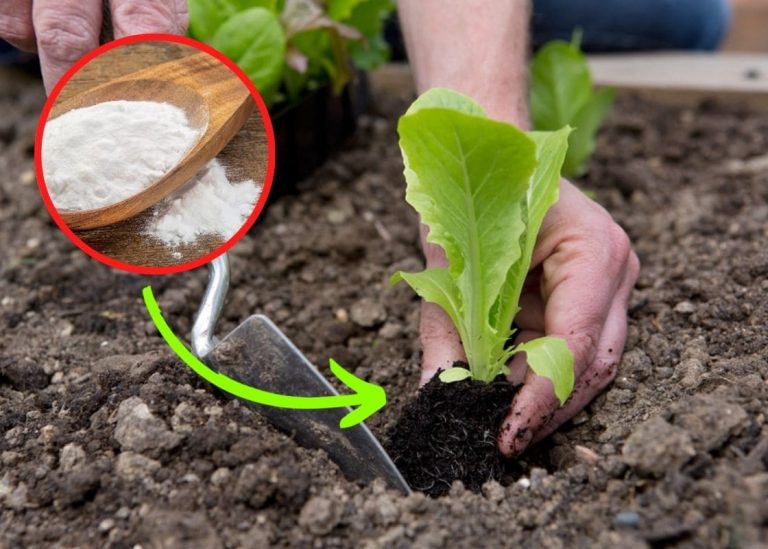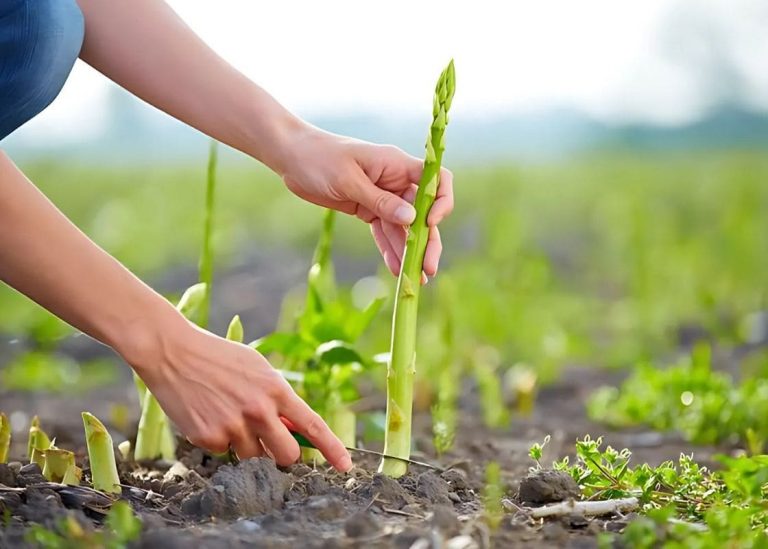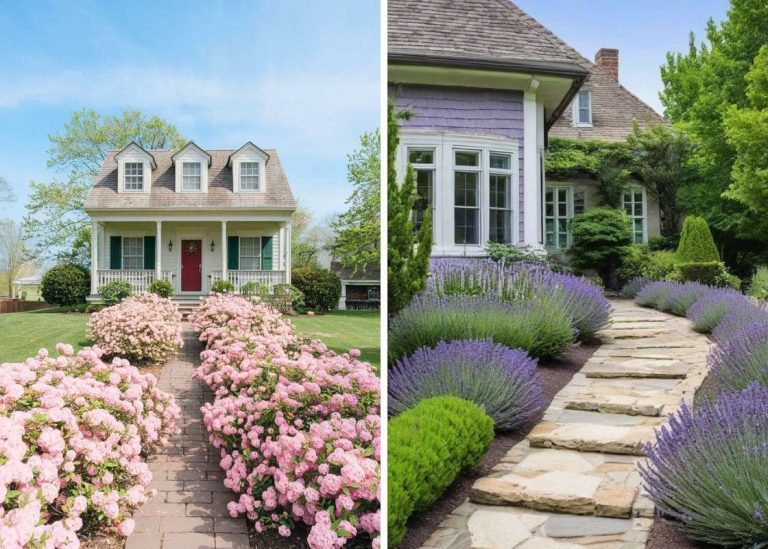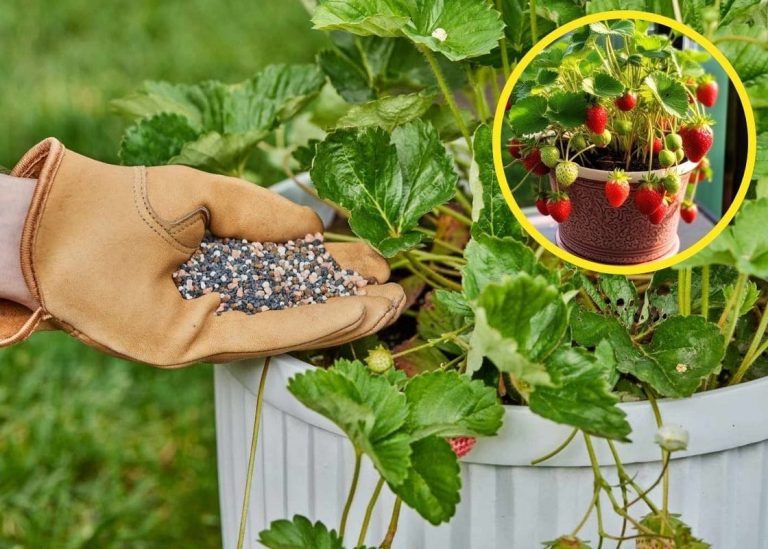25 Stunning Fall Flowers to Keep Your Garden Vibrant
Last October, during an afternoon walk with my dog through the back garden, I spotted something quietly blooming in the farthest corner—a spray of deep pink anemones still dancing in the breeze. Everything else around them had begun to fade, but these flowers stood proud, like they hadn’t received the memo that the season was over. That moment didn’t just catch me off guard, it reshaped how I saw fall in the garden.
For the longest time, I treated fall as a winding-down season—more cleanup than color, more goodbye than hello. But it doesn’t have to be. Autumn has its own kind of magic. The air cools, but the tones warm. Rusty oranges, moody purples, and glowing golds fill the beds in a way that spring just can’t touch. It’s bold, dramatic, and full of life—if you know where to look.
That year, I began collecting fall flowers thrive in cooler days and crisp nights, and they create a garden that carries you gently into winter with arms still full of color. Let me take you through a few of the fall bloomers that you’ll want to invite into your own garden.
#1. Chrysanthemums

I grow Chrysanthemums in terra cotta pots and nestle them near my steps where their warm colors echo the turning leaves. Deep burgundies, amber oranges, and even purples with a silvery sheen.
They reward a little early summer pinching with mounds of blooms in fall. And the best part? They hold their color even as the days grow shorter. Give them sun, give them space, and they’ll give you weeks of joy.
#2. Asters

Years ago, a neighbor thinned out her asters and offered me a few clumps. I tucked them into a corner of the garden without much thought. By October, they were buzzing with bees, covered in lavender blossoms, and glowing like stars at dusk.
Asters are reliable, low-fuss, and surprisingly resilient. They don’t ask for much but deliver a burst of soft purples, pale pinks, and blues when most plants are giving up. Pair them with ornamental grasses for an easy, elegant display.
#3. Goldenrod
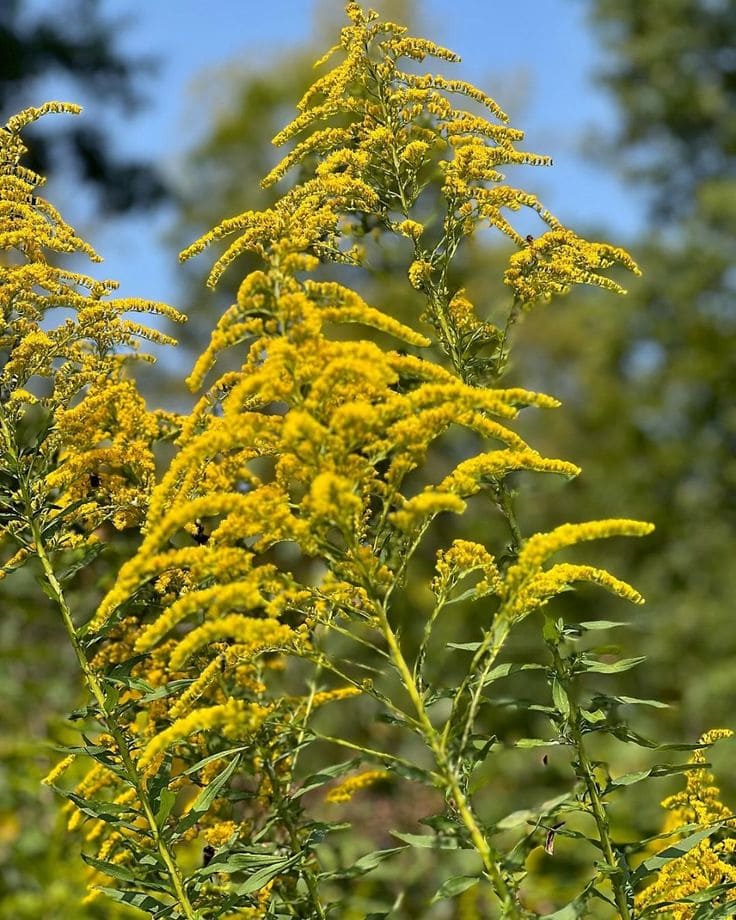
Goldenrod lights up the back of my border like a row of lanterns. Despite the myth, it doesn’t cause allergies—that’s ragweed’s fault. I love how it rises tall, almost defiant, and casts a golden glow that makes everything around it look richer.
Once I planted it in a dry patch of rough soil just to see if anything would grow. Goldenrod didn’t just grow—it flourished. Since then, I’ve let it have its way in a few spots, where it waves gently in the breeze and softens the fading green.
#4. Helenium
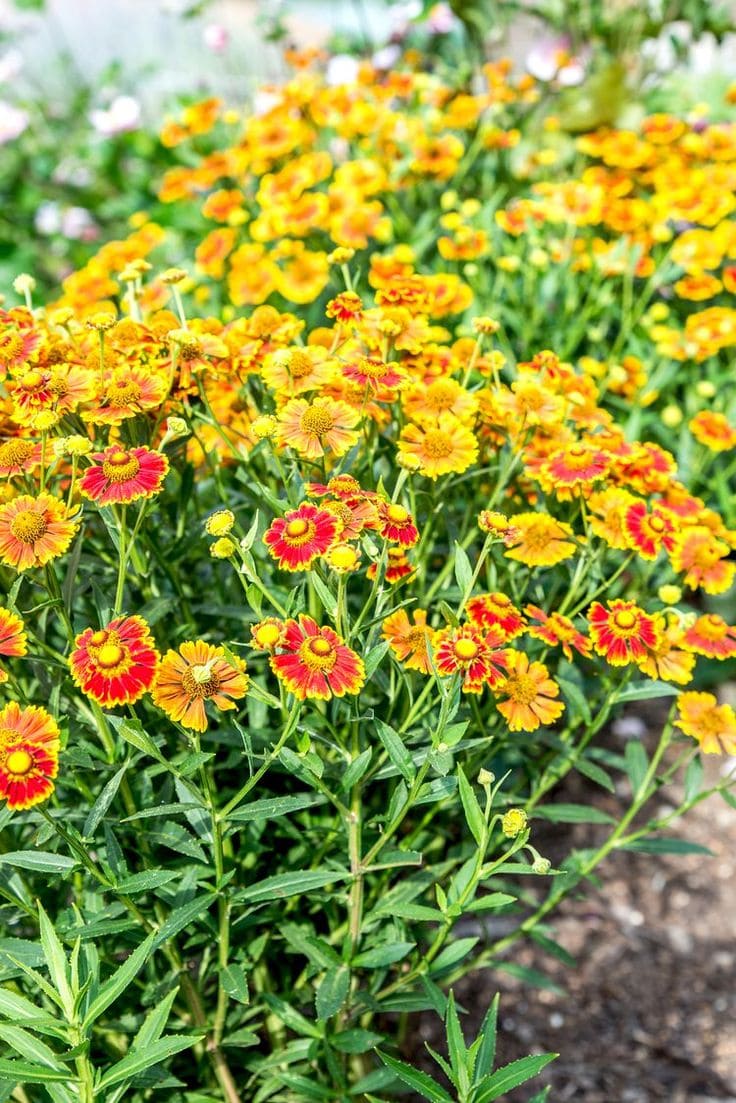
A friend once called helenium “sunset in a flower.” That’s exactly how it feels. The petals curl slightly at the tips and come in gradients of copper, rust, and gold. I added them to the garden the year we re-did the front bed, and they’ve returned every fall with even more fire.
They’re often overlooked, but once you see them backlit by the afternoon sun, they’re impossible to forget. Plus, they mix beautifully with dahlias and dark-leaved perennials.
#5. Sedum ‘Autumn Joy’

One fall, I brought home a pot of ‘Autumn Joy’ from a plant swap. At first glance, it looked simple—thick green leaves and pale flower heads. But by October, those heads had deepened into rich rose tones, and butterflies wouldn’t leave them alone.
Sedum is one of those no-fuss plants that ends up stealing the show. It needs almost no care and handles drought like a champ. Let the dried blooms stand through winter, and you’ll thank yourself come frost.
#6. Japanese Anemones
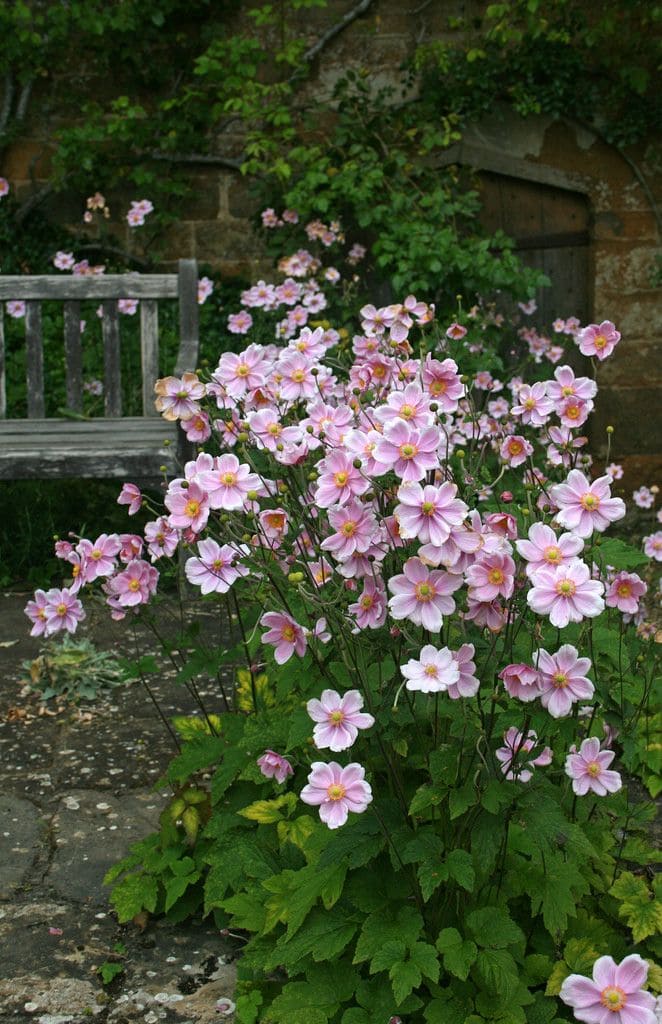
If grace had a shape in the garden, it would look like Japanese anemones. These slender-stemmed blooms sway gently in the breeze, often blooming long past the point where everything else has faded. I tucked a few into a shady spot beside the compost bin, thinking they wouldn’t do much. Now they light up that corner every fall with pink and white petals that seem to float in midair.
Their dark foliage makes the flowers pop, especially in dappled light. They’re perfect for partial shade and a great way to keep quieter corners from feeling bare.
#7. Pansies
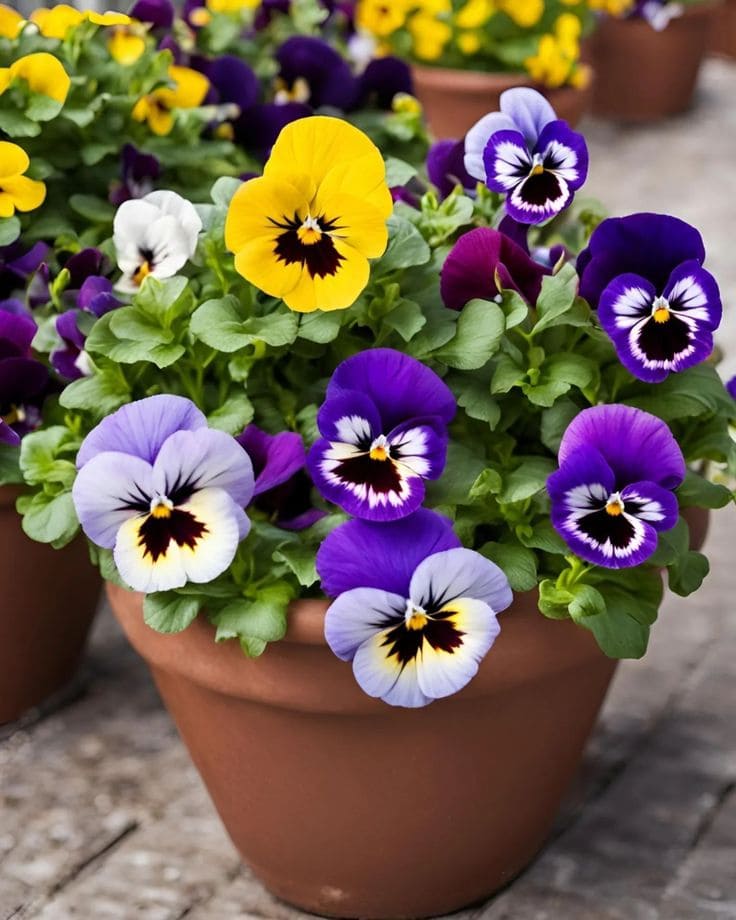
My kids call pansies the “happy face flowers,” and I can’t argue with that. Their bold little expressions show up just when the garden needs a boost. In autumn, I plant them near the front walk where they’ll greet every guest with a cheerful nod.
Pansies aren’t just pretty—they’re tough. A light frost won’t faze them, and I’ve seen them peeking through a dusting of snow like it was nothing. Their range of colors, from deep velvet purples to bright oranges, makes them perfect for seasonal displays.
#8. Marigolds
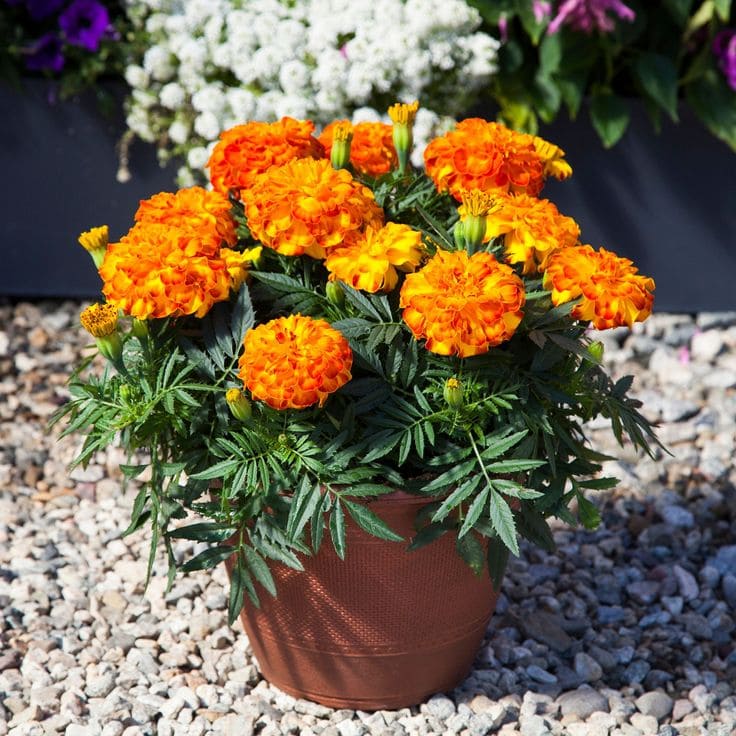
The first time I grew marigolds, I was mostly looking for something to keep pests out of my tomatoes. I had no idea they’d become one of my favorite fall flowers. Their scent is strong, earthy, and unmistakable—some love it, some don’t, but there’s no denying their spirit.
I plant them in big patches and let them spill out of pots. The orange and gold tones seem tailor-made for autumn. Plus, the more you deadhead them, the more they bloom, right into November.
#9. Dahlias
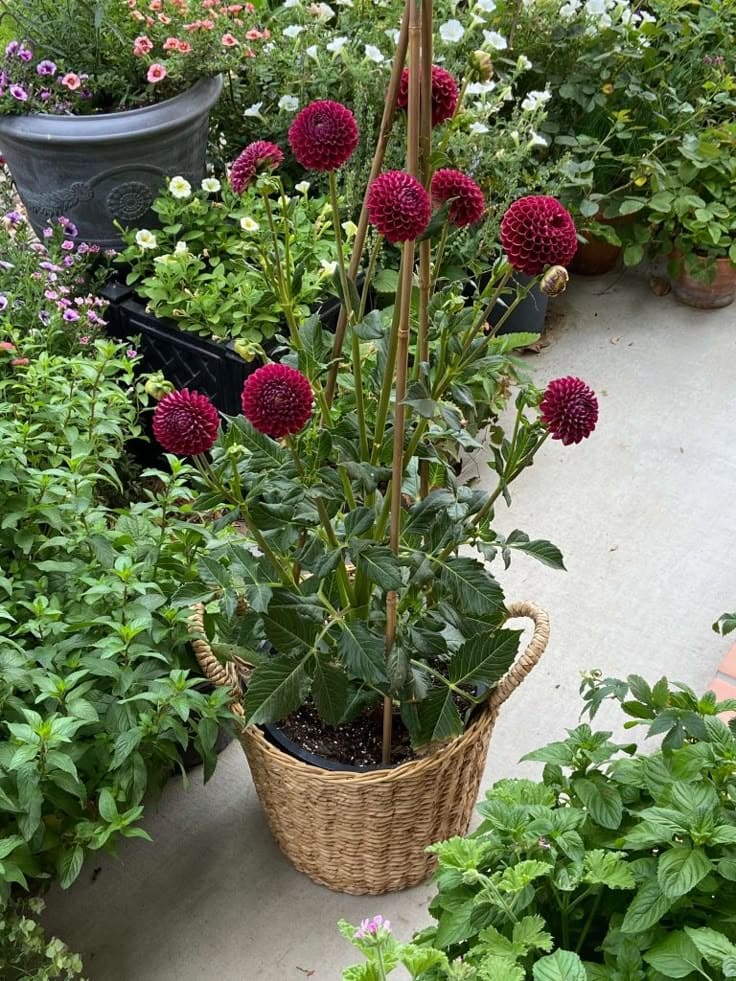
Every dahlia I grow feels like a love letter to the garden. There’s something extravagant about them—the way they bloom in layers, like tissue paper fans. Some are the size of dinner plates, others small and spiky.
I dig up the tubers each fall and store them carefully over winter. It’s a bit of work, but when those blooms come back the following year, it feels like a reward. Dahlias need good sun and rich soil, but they give back tenfold.
#10. Montauk Daisies
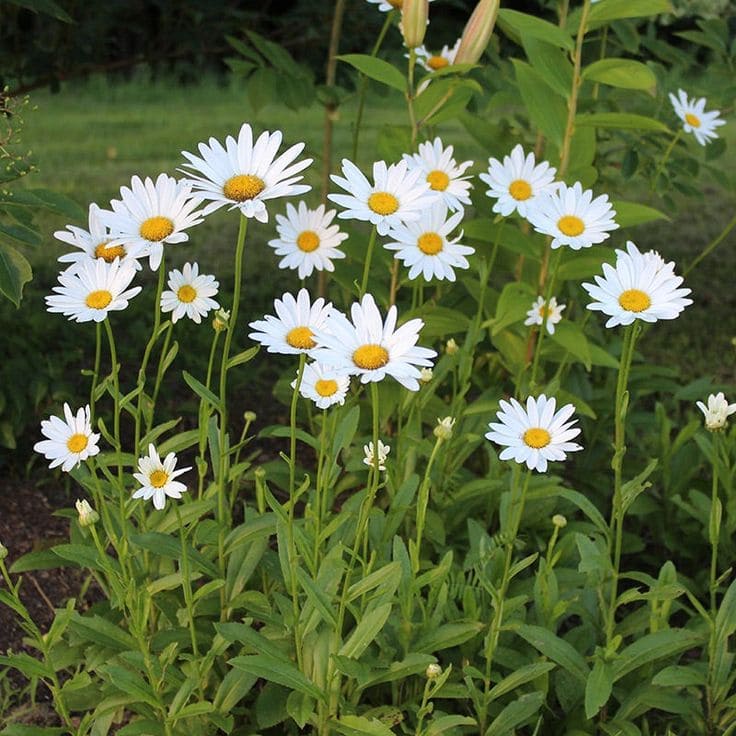
Montauk daisies didn’t win me over at first. Their foliage felt coarse, and they took up space without much show. But one year, after cutting them back in summer, they exploded into bloom just as everything else began to fade.
Now I count on them for a final burst of brightness. Their thick, leathery leaves help them tolerate dry soil, and their white blooms catch the light like little moons scattered across the border.
#11. Toad Lilies
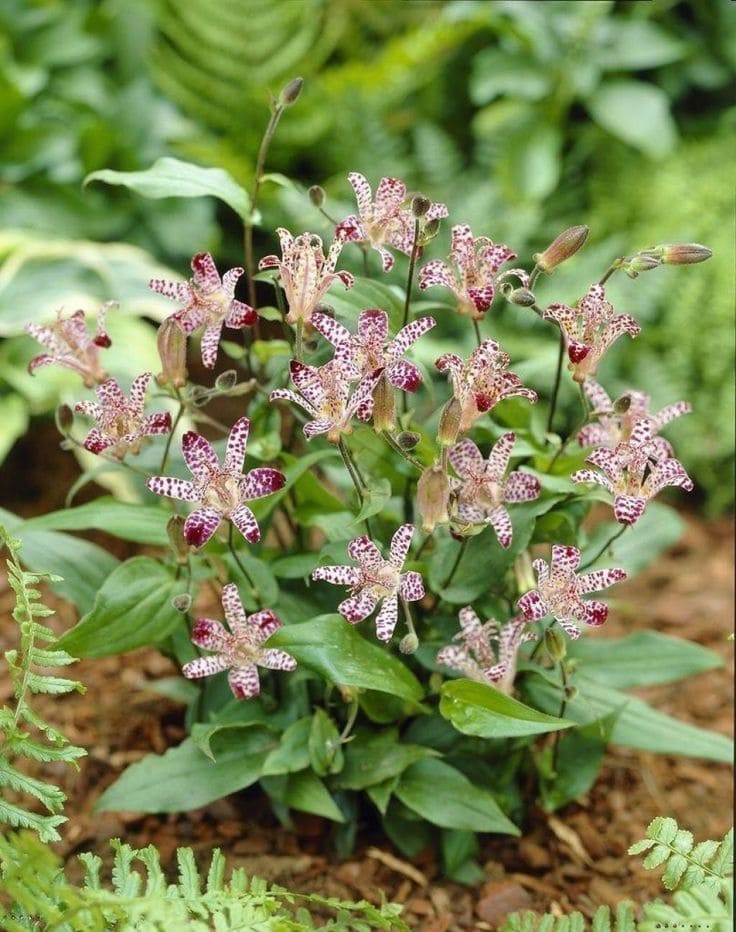
Toad lilies may have a funny name, but their speckled, orchid-like blooms are nothing short of magical. They love shade and moisture, making them perfect for woodland gardens.
When most flowers have finished their show, these unique blossoms emerge, adding unexpected charm to autumn gardens.
#12. Sunflowers
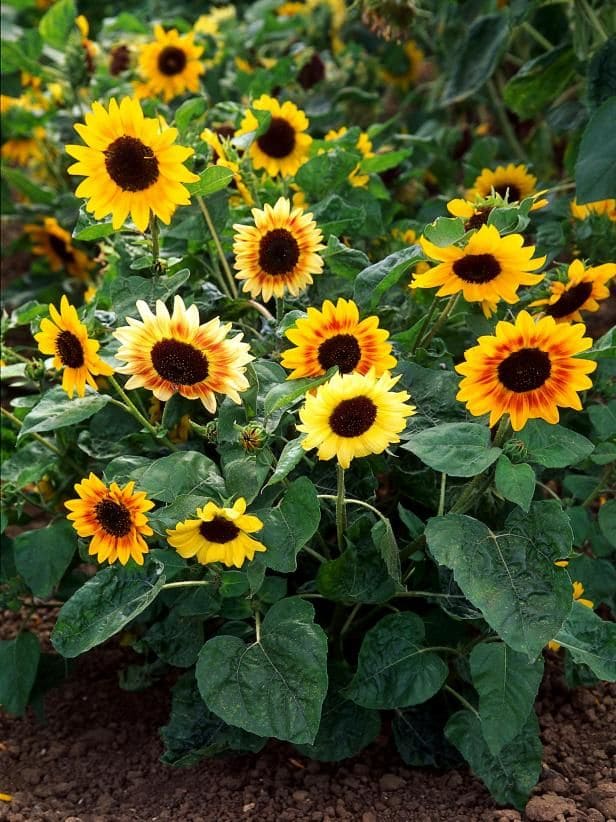
Everyone knows summer sunflowers, but varieties like ‘Autumn Beauty’ extend their show into fall. I planted mine along the fence where they catch the morning light. Their hues shift from golden to burgundy, like flames flickering above the fading green.
The tall stalks sway with the breeze, and birds perch on the seed heads long after the petals have dropped. These giants bring joy and drama to every corner they touch.
#13. Cosmos
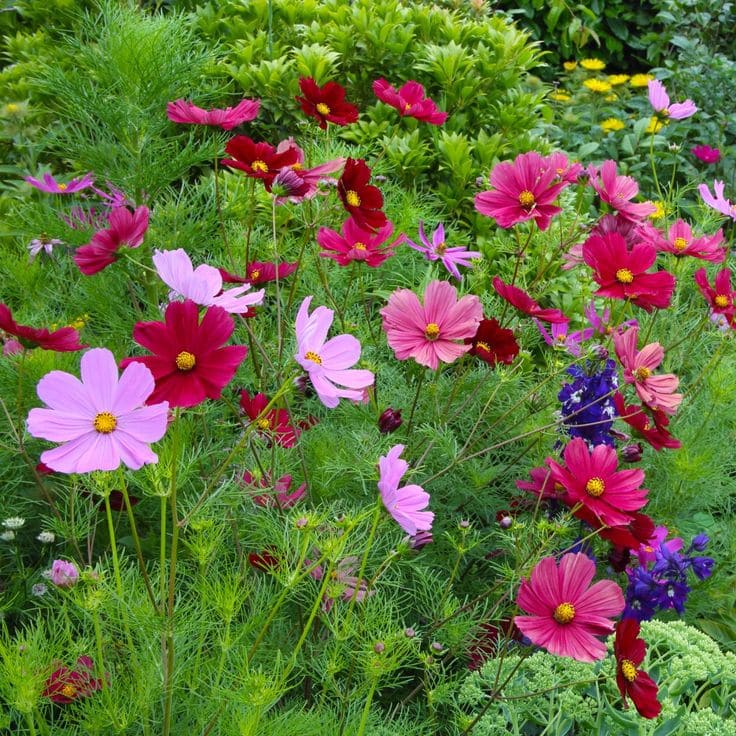
Cosmos have a carefree charm. They remind me of roadside meadows and childhood summers. In fall, they keep blooming, tall and willowy, long after others have quit.
They self-seed generously, so you often get surprises the next year. Their delicate petals flutter in the lightest wind, and the colors—soft pinks, deep magentas, crisp whites—blend beautifully with fading grasses.
#14. Black-Eyed Susans

Black-eyed Susans never seem to tire. Their golden petals and dark centers keep shining long into autumn. I grow them along the back path where they create a golden wave that leads you through the garden.
They attract bees and butterflies even in cooler weather and require very little attention. They’re proof that resilience can also be beautiful.
#15. Violas
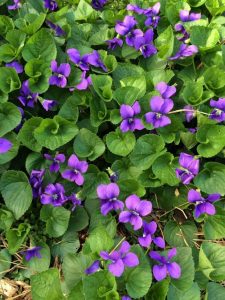
Violas are little garden treasures. Smaller than pansies but just as vibrant, they hold their own in the fall chill. I tuck them into window boxes where their colors spill out like confetti.
Their gentle fragrance is an added bonus, especially near open windows. A friend once told me violas were like whispers of spring that didn’t want to let go.
#16. Amaranth

Amaranth doesn’t whisper—it cascades. Long, drooping tassels in bold reds and purples turn any garden bed into a statement. I grow them for the drama and the texture, and they never disappoint.
They’re edible, too—an ancient grain with history as rich as its color. I often let them dry on the stem and use the plumes in fall wreaths.
#17. Monkshood
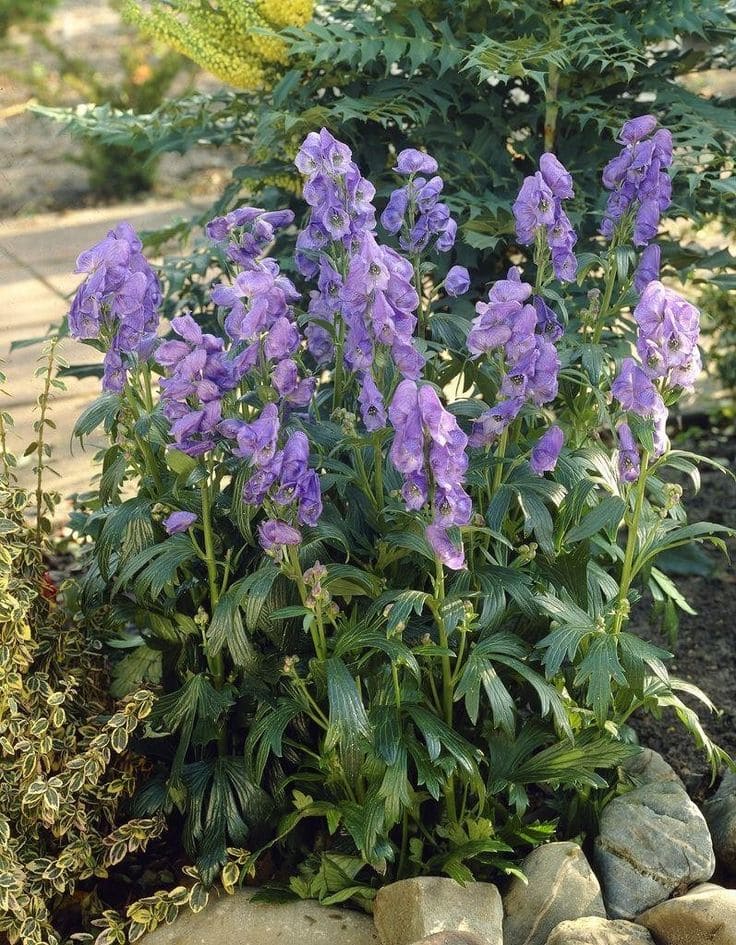
Monkshood carries a mysterious kind of beauty. Tall spires of deep indigo rise like sentinels in the garden. I plant them in a quiet corner away from pets and children since they’re highly toxic.
Still, they offer one of the deepest blues you’ll find in a flower, and their blooms feel like a rare gift at the edge of the season.
#18. Clematis
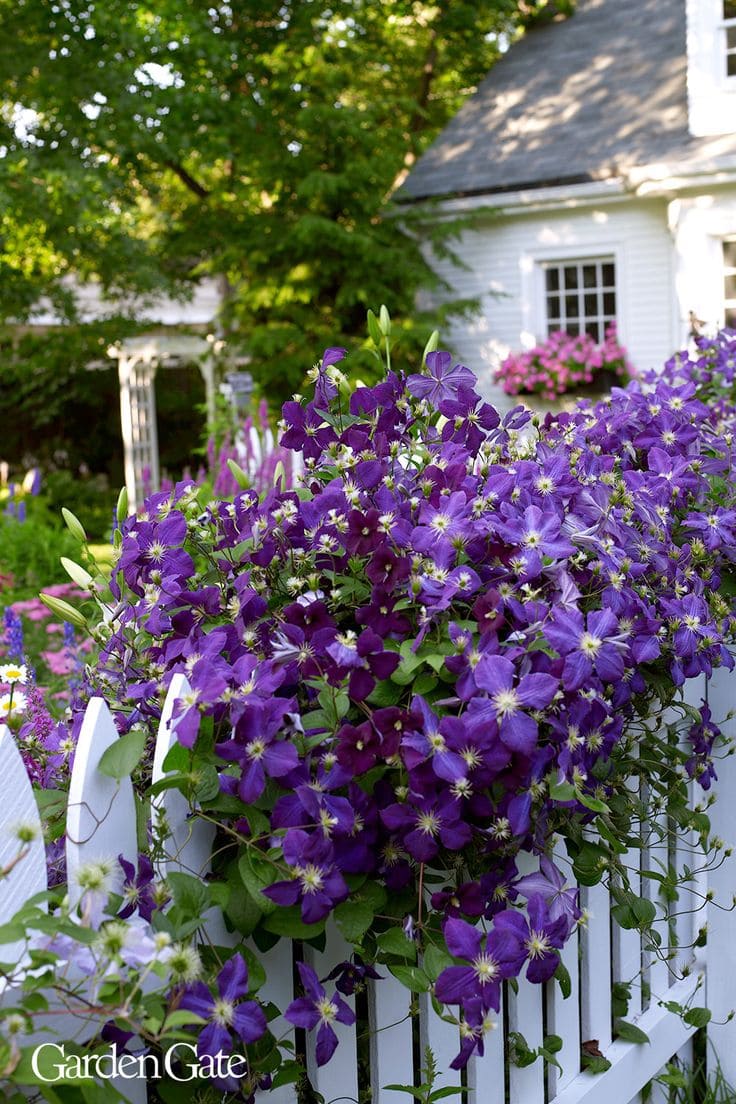
Some clematis varieties, like ‘Sweet Autumn,’ wait until fall to bloom. I trained mine over an old wooden arch, and each September it erupts in a froth of tiny, fragrant white flowers.
It’s the last flourish before winter. The perfume is soft but lingers, especially in the late afternoon sun.
#19. Autumn Crocus
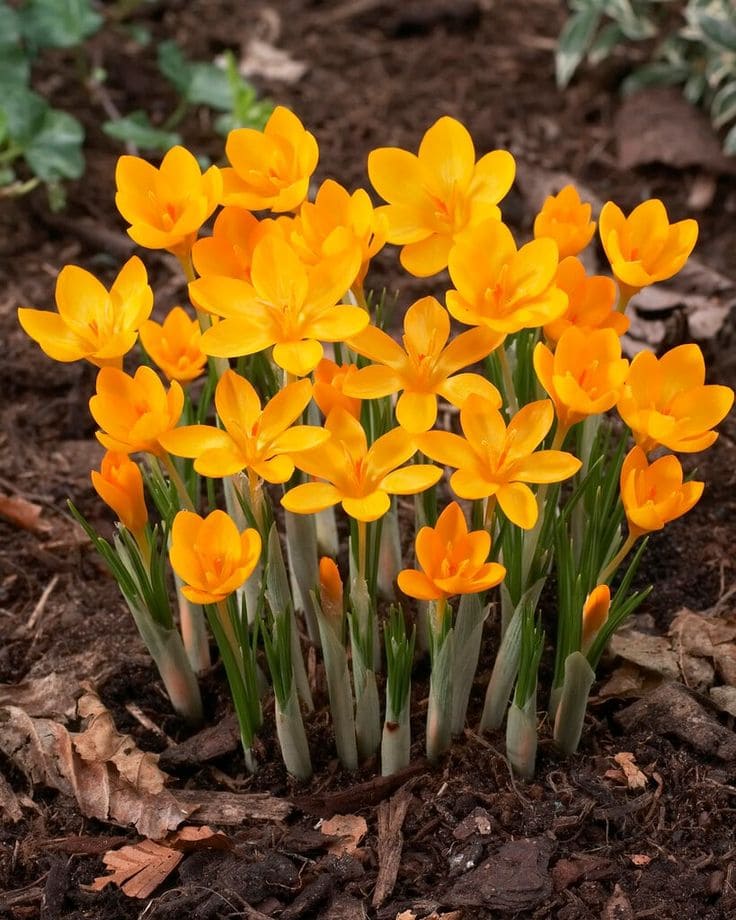
Autumn crocus arrives like a surprise party. One day there’s bare earth, and the next, delicate purple flowers are popping up from nowhere. No leaves, no fuss—just blooms.
They’re short-lived but unforgettable. I plant them in drifts near walkways so they can catch people off guard in the best way.
#20. Zinnias
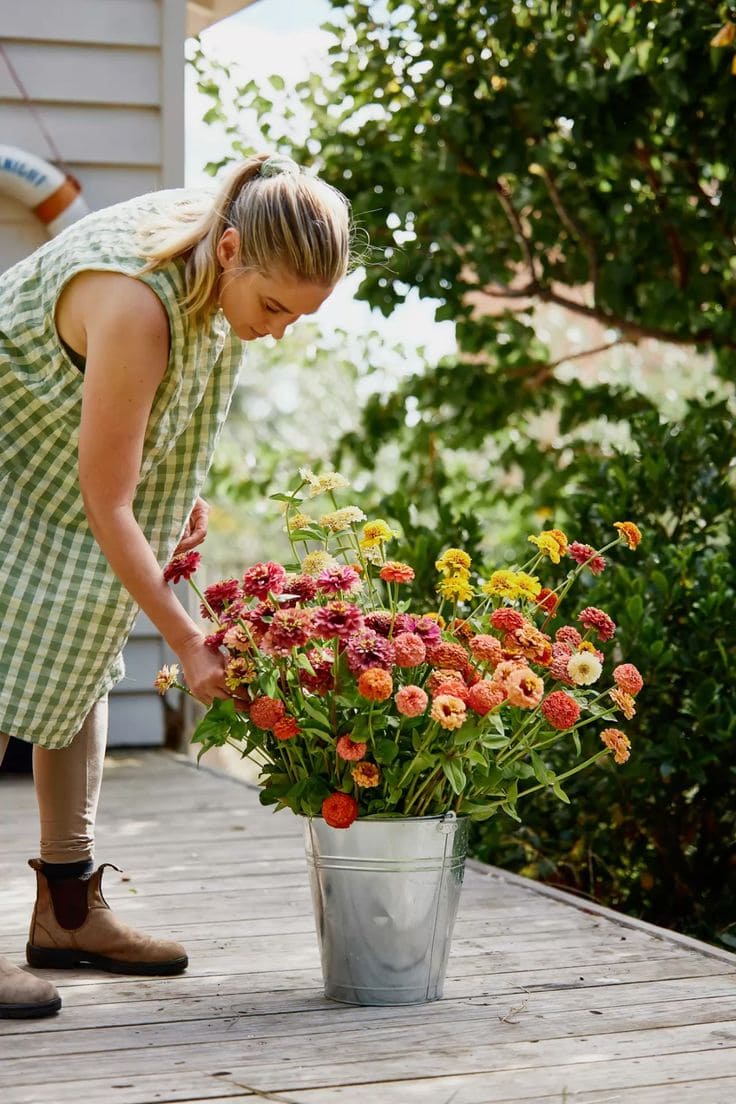
Zinnias have become my fallback when I want bold color late in the season. They hold their heads high even when the nights turn crisp. My favorite varieties mix raspberry pink, tangerine, and yellow in patterns that almost feel painted.
They last forever in vases and keep the pollinators busy while everything else is winding down.
#21. Coral Bells
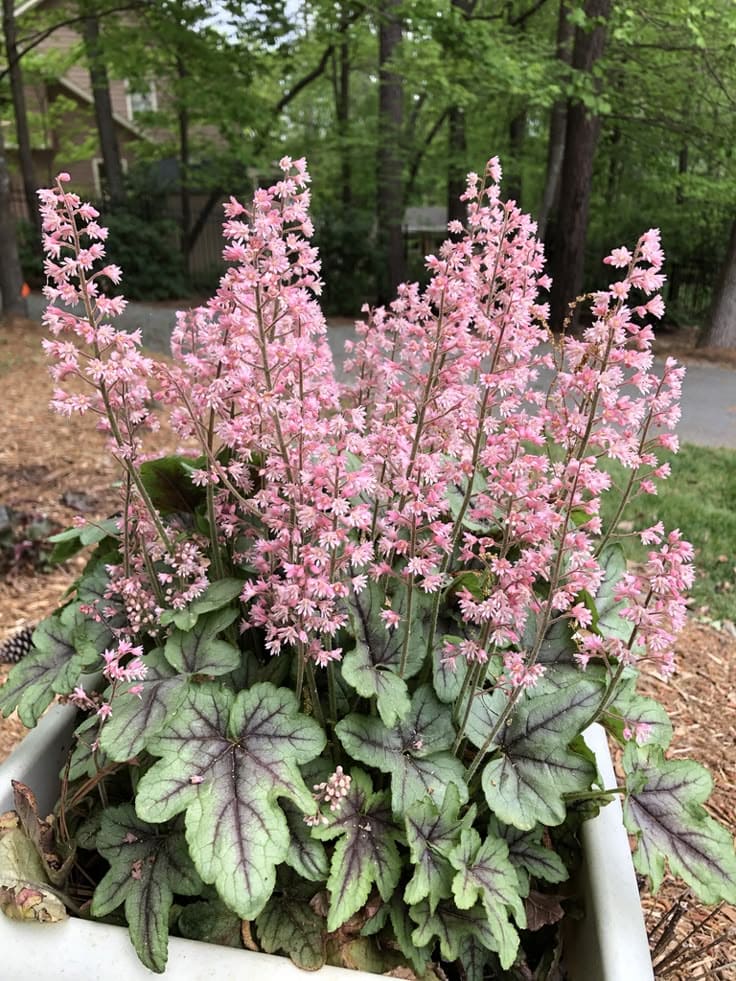
Coral bells are a foliage favorite, but their tall, wispy flowers are a lovely bonus. I use them as fillers along borders, where their colored leaves shine from early spring into fall.
From lime to maroon, the variety is endless. Their flowers might be subtle, but the foliage is anything but.
#22. Russian Sage
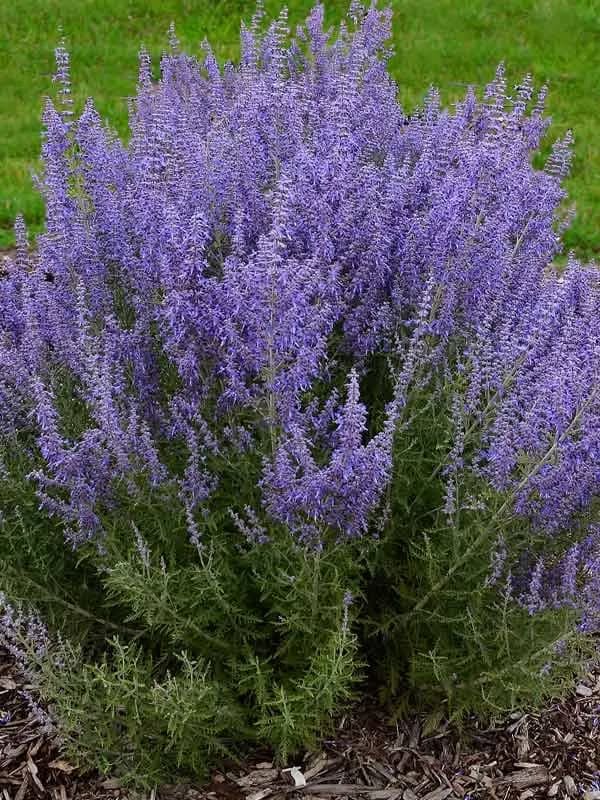
There’s a stretch of my path lined with Russian sage, and every autumn it turns silver-blue and smoky. The scent is crisp and almost herbal, and the tall stems add structure without heaviness.
It’s deer-resistant and practically thrives on neglect. When paired with yellow blooms, the effect is breathtaking.
#23. Chinese Lanterns
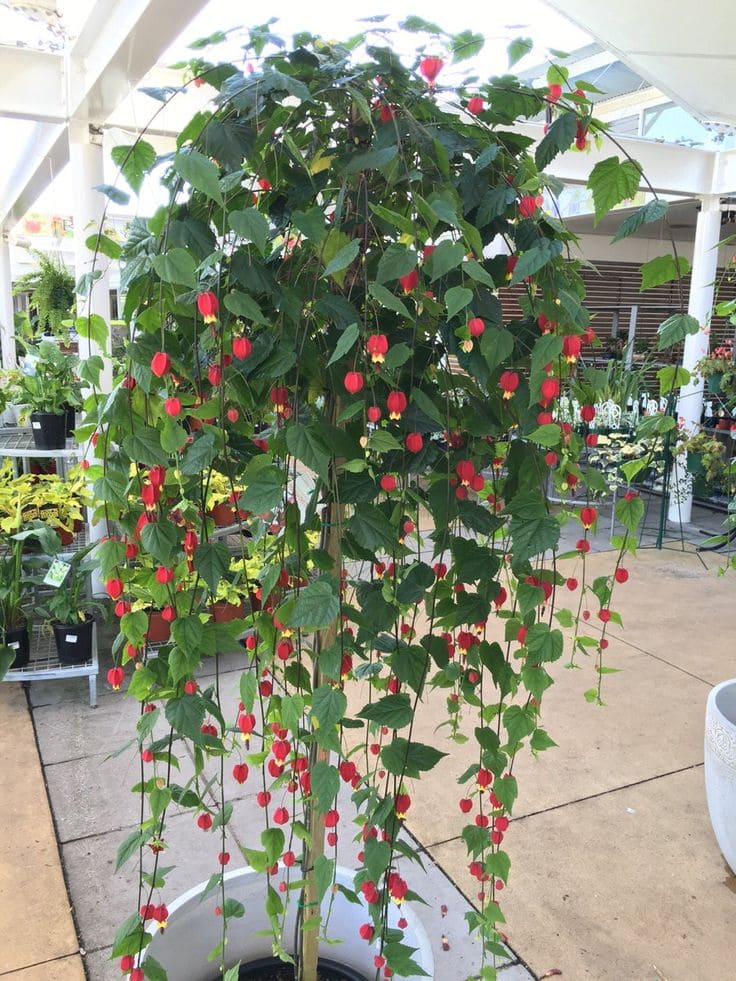
The papery husks of Chinese lanterns look like tiny pumpkins strung through your garden. I grow them mostly for decoration. Come October, I gather a handful to dry for centerpieces and wreaths.
They spread quickly, so keep an eye on them. But for a splash of Halloween-orange magic, they can’t be beat.
#24. Caryopteris

Caryopteris, or blue mist shrub, offers soft lavender-blue blooms when the rest of the garden starts to hush. It has a gentle presence, but don’t let that fool you—pollinators adore it.
Its silvery foliage pairs beautifully with bold fall colors. I like planting it near pathways where its scent surprises you as you brush past.
#25. Verbena
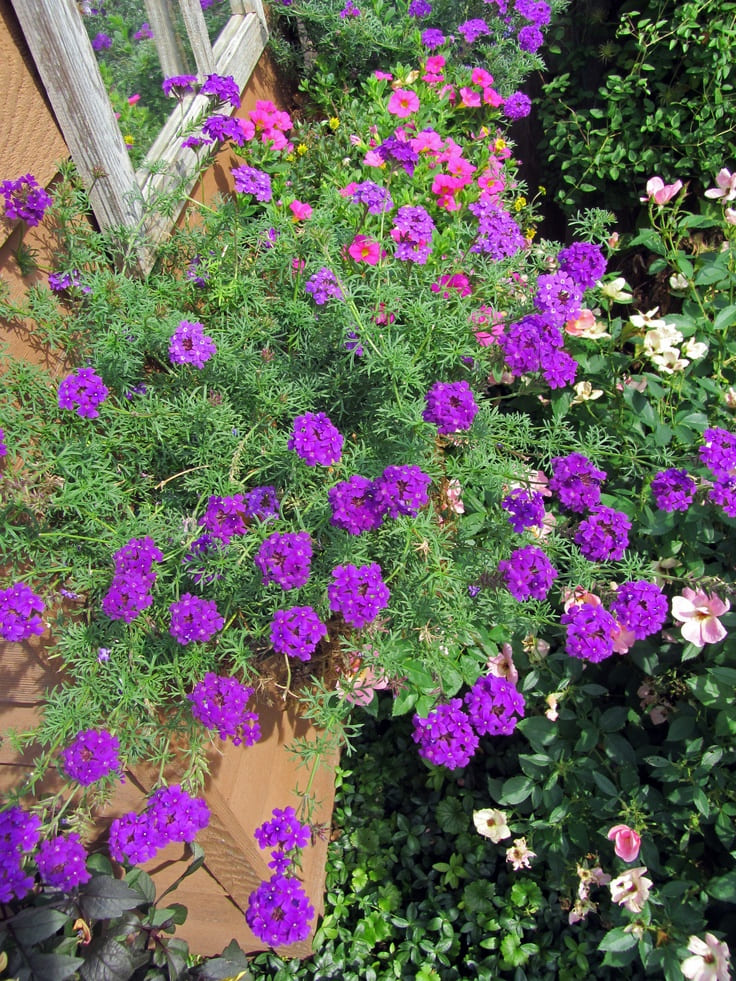
Verbena carries the last word in color. It keeps blooming until frost nips it away, throwing clusters of bright purple or pink wherever you let it.
It thrives in the sun and handles neglect like a pro. Even in the final stretch of the season, it manages to feel fresh.
Final Thoughts
Fall flowers hold a different kind of beauty. They don’t beg for attention—they stand quietly, confidently, casting long shadows and catching golden light. They’re the deep breath after summer, the last page of a good book.
Growing them has made me love this season in ways I never expected. It’s not just about the colors. It’s the feeling of abundance, even as things wind down. The joy of small surprises.
If you’ve ever felt your garden fade too fast, these blooms are your answer. Keep planting. Keep watching. Fall has more to say than you think.


